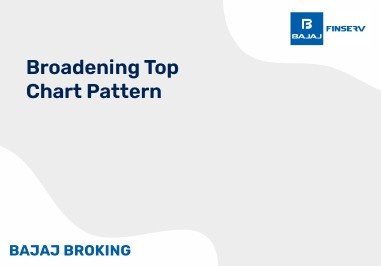In options trading, straddles vs strangles are two popular strategies used to profit from market volatility. Both involve buying or selling call and put options simultaneously but differ in strike prices.
A straddle consists of purchasing a call and put option with the same strike price and expiration date. It benefits from significant price movements in either direction, making it ideal for traders expecting high volatility but uncertain of direction.
A strangle, on the other hand, involves buying a call and put option with different strike prices but the same expiration. This strategy requires a more substantial price movement to be profitable but is usually cheaper than a straddle.
When comparing straddles vs strangles, traders consider cost, risk, and potential returns. While straddles are more expensive but offer quicker profitability, strangles are cheaper but need greater price shifts. Understanding both helps traders select the best strategy based on market conditions and risk tolerance.
What is a Straddle Strategy?
A straddle strategy is an options trading approach designed to profit from significant price movements in either direction, regardless of whether the market moves up or down. It involves purchasing both a call option and a put option with the same strike price and expiration date. This strategy is commonly used when traders anticipate high volatility but are uncertain about the direction of the price movement.
In a long straddle, an investor buys a call and a put option. If the underlying asset experiences a substantial price movement—either upward or downward—the trader can profit by exercising the winning option while limiting losses on the other. This approach is beneficial during earnings announcements, economic data releases, or major news events that could cause sharp price fluctuations.
A short straddle, on the other hand, involves selling both a call and put option at the same strike price. This is a strategy for traders expecting low volatility, as they profit from the premiums collected if the underlying asset stays near the strike price. However, it carries unlimited risk if the asset moves significantly.
The straddle strategy is widely used in stocks, forex, and commodities trading, particularly when market uncertainty is high. While it offers substantial profit potential, it also involves risks such as premium costs and potential time decay.
What is a Strangle Strategy?
It is an options trading approach where a trader buys a call and a put option on the same asset, with matching expiration dates but different strike prices. In a long strangle, the investor typically buys an out-of-the-money call option and an out-of-the-money put option. The idea behind this strategy is to benefit from significant price movement in either direction—upward or downward—beyond the cost of the premiums paid for the options. The maximum risk is confined to the total premiums paid, while the potential reward is unlimited for the call if the asset surges and significant for the put if it drops sharply.
The strangle is particularly attractive in markets where the trader anticipates high volatility but is uncertain about the direction of the price move. Because both options are out-of-the-money when purchased, the initial cost is lower compared to strategies using in-the-money options.
This strategy requires careful timing and an accurate estimation of volatility. Adjusting positions or employing exit strategies before expiration can help manage risk. In practice, successful deployment of a strangle strategy requires diligent research, robust risk management techniques, and continuous monitoring of market conditions.
Key Differences Between Straddles and Strangles
When comparing straddles vs strangles, understanding these differences can help traders select the strategy that best fits their market outlook and risk tolerance.
Feature
| Straddles
| Strangles
|
Strike Prices
| Both the call and put options are purchased at the same strike price, typically at-the-money.
| The call and put options are purchased with different strike prices; the call is usually above and put is below the current price, making them out-of-the-money.
|
Premium
| Higher premium costs because at-the-money options have greater intrinsic value and are more expensive.
| Lower premium costs since out-of-the-money options are cheaper, reducing the initial investment but requiring larger moves to be profitable.
|
Risk & Break-Even
| Smaller price moves are needed to reach break-even since the strike price is centered around the current market price.
| Requires a larger price move to reach break-even due to the gap between the current market price and the strike prices.
|
Profit Potential
| Offers significant profit potential if the underlying asset makes a strong move, with unlimited upside; the loss is limited to the premiums paid.
| Also provides considerable profit potential with large moves, though the break-even points are further out, increasing the risk of loss if the move is insufficient.
|
Market Outlook
| Best suited for situations where a trader anticipates immediate and substantial volatility in the underlying asset.
| Ideal when expecting a significant move in price, but with less emphasis on short-term volatility.
|
This comparison highlights the primary distinctions between straddles and strangles, helping to navigate the nuances of each strategy when considering straddles vs strangles in the trading approach.
Advantages and Disadvantages of Straddles
A straddle is an options trading strategy where an investor buys both a call and a put option with the same strike price and expiration date. This strategy is primarily used to capitalize on significant price volatility in either direction. While it offers high-profit potential, it also comes with certain risks.
Advantages
Profits from Volatility – A straddle benefits from large price swings in either direction, making it ideal for uncertain market conditions or major news events.
Unlimited Profit Potential – The potential profit on the upside is unlimited if the asset’s price rises significantly, while the downside gain is limited to the extent of the asset’s decline.
No Directional Bias Needed – Unlike directional trades, a straddle allows traders to profit regardless of whether the price moves up or down.
Simple Execution – A straddle is relatively easy to implement, requiring only two at-the-money options.
Disadvantages
High Premium Cost – Since both options are at-the-money, the initial cost is higher compared to other strategies like strangles.
Time Decay Risk – If the asset remains near the strike price, both options lose value due to time decay, leading to potential losses.
Break-Even Challenges – The asset's price must move substantially to offset the premiums paid before generating a profit.
Implied Volatility Risk – A drop in implied volatility can reduce the option values, negatively affecting the trade’s profitability.
Advantages and Disadvantages of Strangles
A strangle is an options trading strategy where an investor buys a call option and a put option with the same expiration date but different strike prices. The call option is set above the current market price, while the put option is set below it. This strategy is primarily used to profit from high volatility but has its own set of advantages and disadvantages.
Advantages
Lower Cost – Strangles are cheaper than straddles since both options are out-of-the-money, reducing the total premium paid.
Profits from Volatility – Like straddles, strangles benefit from large price movements, making them useful in uncertain market conditions.
Unlimited Upside Potential – The call option has no profit cap if the underlying asset's price surges, while the put option can generate significant gains if the price drops sharply.
More Flexibility – Strangles allow traders to speculate on volatility without requiring an exact price prediction, only that the move is substantial.
Disadvantages
Larger Price Move Needed – Because both options are out-of-the-money, the asset must experience a more significant move to reach break-even.
Time Decay Risk – If the price remains stagnant, both options lose value due to time decay, leading to a total loss of the premiums paid.
Implied Volatility Sensitivity – A decline in implied volatility can reduce the value of both options, affecting profitability.
Potential for Full Premium Loss – If the asset price does not move enough by expiration, both options expire worthless, resulting in a complete loss of the initial investment.
When to Use Straddles vs. Strangles
Both straddles and strangles are volatility-based options strategies that traders use when expecting significant price movements. However, their applications differ based on market conditions, cost considerations, and the degree of price movement required for profitability.
When to Use a Straddle
A straddle is most effective when an asset is expected to experience high volatility but the direction of the move is uncertain. It is particularly useful ahead of major market events such as earnings reports, economic announcements, or major geopolitical developments. Since both options in a straddle have the same strike price (at-the-money), smaller price movements can reach break-even, making it a suitable choice when moderate price swings are anticipated. However, the cost of entry is higher since at-the-money options have higher premiums.
When to Use a Strangle
A strangle is ideal when traders expect substantial price movement but want a lower-cost strategy. Since both options are out-of-the-money, the initial investment is lower than a straddle. This makes strangles more attractive when implied volatility is lower, and the trader anticipates a sharp move in price. However, because the break-even points are further apart, the asset must experience a more significant movement for profitability.
Real-World Examples of Each Strategy
Both straddles and strangles are commonly used in the stock market, particularly around high-impact events that can trigger significant price movements. Below are real-world examples of how traders might use each strategy.
Example of a Straddle
A trader anticipates that Apple Inc. (AAPL) will experience high volatility due to an upcoming earnings announcement. However, they are unsure whether the stock will surge on strong results or drop if earnings disappoint. The stock is currently trading at $150. The trader buys:
A call option with a strike price of $150
A put option with a strike price of $150
Both options have the same expiration date
If Apple’s earnings surprise the market and the stock jumps to $170, the call option gains significant value, while the put option expires worthless. If the stock falls to $130, the put option becomes profitable, and the call expires worthless. If Apple’s stock remains near $150, both options lose value due to time decay.
Example of a Strangle
A trader expects increased volatility in Tesla (TSLA) due to an upcoming product launch but believes the stock could move significantly in either direction. Tesla is trading at $200, so the trader buys:
A call option with a strike price of $210
A put option with a strike price of $190
Both options share the same expiration date
If Tesla’s announcement leads to a rally past $230, the call option gains value, while the put expires. If the stock drops to $170, the put option profits. If Tesla’s price stays between $190-$210, both options lose value.
Common Mistakes to Avoid
While straddles and strangles can be profitable in volatile markets, traders often make mistakes that reduce their chances of success. Avoiding these common pitfalls can improve trade execution and risk management.
1. Misjudging Volatility Expectations
One of the biggest mistakes traders make is entering a straddle or strangle without properly assessing implied volatility. If volatility is already high before an event, option premiums will be expensive. If volatility drops after the event (known as a volatility crush), the options may lose value even if the stock moves.
2. Choosing the Wrong Strike Prices
Selecting improper strike prices can lead to a failed trade. In a straddle, picking an in-the-money or far out-of-the-money strike reduces the strategy’s effectiveness. In a strangle, setting strikes too far apart increases the chance of both options expiring worthless if the price does not move enough.
3. Holding Too Long and Ignoring Time Decay
Options lose value over time due to theta decay. If the expected price movement does not happen quickly, the options may lose significant value before expiration. Traders must manage their positions and consider exiting early to lock in profits or minimize losses.
4. Overlooking Break-Even Points
Traders sometimes underestimate how much the stock price must move to reach break-even. If the stock moves but does not exceed the total premium cost, the trade results in a loss.
5. Ignoring Risk Management
Not setting stop-loss levels or exit strategies can lead to unnecessary losses. Successful traders monitor trades closely and adjust positions when necessary to minimize risk.
Conclusion
In conclusion, a careful evaluation of straddles vs strangles reveals that each strategy offers unique advantages tailored to specific market conditions. Straddles can capture moderate price movements with quicker break-even points, while strangles provide lower upfront costs and greater flexibility for significant shifts. Success in both strategies hinges on accurate volatility assessment and effective risk management. Aligning your market outlook with the appropriate strategy is essential for achieving optimal results.
To further enhance your trading experience, consider utilizing the comprehensive features offered by the Baja Broking platform, designed to support efficient and informed options trading decisions. Empower your trading success today.













